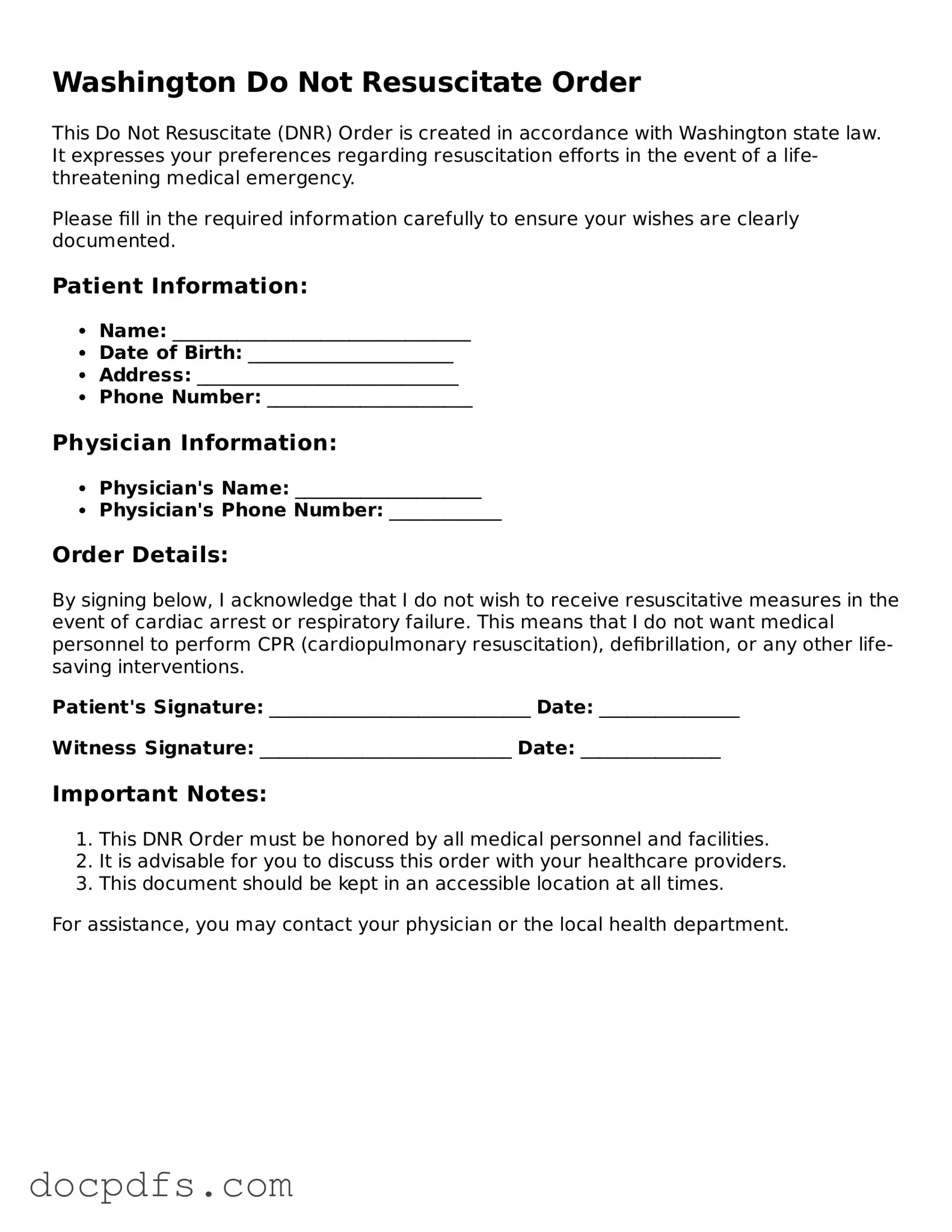What is a Do Not Resuscitate (DNR) Order in Washington?
A Do Not Resuscitate Order is a legal document that allows a person to refuse resuscitation efforts in the event of a medical emergency. In Washington, this order specifically instructs medical personnel not to perform cardiopulmonary resuscitation (CPR) if the individual’s heart stops or they stop breathing.
Who can request a DNR Order?
Any adult who is capable of making their own medical decisions can request a DNR Order. This includes individuals who are terminally ill, have a serious medical condition, or simply wish to avoid aggressive life-saving measures. In some cases, a legal guardian or a designated healthcare proxy can also request a DNR on behalf of someone who is unable to do so.
How do I obtain a DNR Order in Washington?
To obtain a DNR Order, you should follow these steps:
-
Consult with your healthcare provider to discuss your wishes and understand the implications of a DNR Order.
-
Complete the Washington DNR Order form, which can be obtained from healthcare facilities, hospitals, or online resources.
-
Sign the form in the presence of a witness or notary, as required.
-
Provide copies of the signed DNR Order to your healthcare providers and keep one for your records.
Is a DNR Order the same as a living will?
No, a DNR Order is not the same as a living will. While a DNR specifically addresses resuscitation efforts, a living will outlines a person’s preferences for medical treatment in broader terms, including end-of-life care. Both documents are important for ensuring that your healthcare wishes are respected, but they serve different purposes.
Can I change or revoke my DNR Order?
Yes, you can change or revoke your DNR Order at any time. If you wish to make changes, you must complete a new DNR Order form and ensure that all relevant parties, including healthcare providers, receive the updated document. To revoke a DNR Order, simply inform your healthcare provider and destroy any copies of the previous order.
What happens if I am unable to communicate my wishes?
If you are unable to communicate your wishes and do not have a DNR Order in place, medical personnel will typically perform resuscitation efforts as they are trained to do so. This is why it’s crucial to have a DNR Order documented while you are still able to express your preferences clearly.
Will a DNR Order affect my other medical treatments?
A DNR Order specifically pertains to resuscitation efforts and does not affect other medical treatments you may receive. You will still receive appropriate medical care, pain management, and comfort measures, even with a DNR in place. Your healthcare team will work to ensure that your overall health and comfort are prioritized.
How is a DNR Order recognized in different settings?
In Washington, a DNR Order is recognized across various healthcare settings, including hospitals, nursing homes, and emergency medical services. However, it’s essential to have the order readily available and accessible, as first responders and medical personnel may need to see the document to honor your wishes.
Can family members override a DNR Order?
Family members cannot override a valid DNR Order that you have signed while you were competent to make your own decisions. However, if you have not documented a DNR Order and are unable to communicate, family members may have a say in your medical treatment. It’s always best to discuss your wishes with family members to avoid confusion and ensure that everyone is on the same page.
